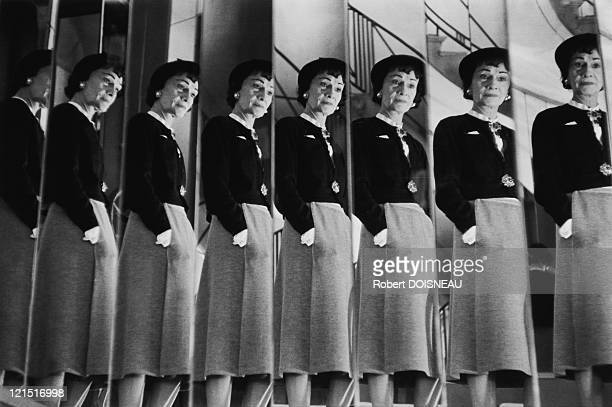When I mention Chanel, do you instantly think of the tweed suits, No.5 perfume, or the double C logo? Chanel has created a highly distinguishable brand around class and exclusivity. Coco Chanel was the creator of the little black dress, a staple in every closet, but does she have more than little black dresses hiding in her closet? Perhaps a few skeletons still linger in Chanel’s history…
An Unglamorous Start
Gabriel Chanel, nicknamed Coco, was born in 1883 in France. From humble beginnings, Chanel’s mother worked as a laundrywoman in a hospital while her father was a traveling street vendor. After her mother’s death, Chanel’s father would eventually abandon her and her siblings to be left in an orphanage. At 18, she found herself a job as a sales assistant in a Maison Grampayre shop.
While working as a sales assistant, she met Étienne de Balsan, a fashion executive. Étienne became more than just a lover but a financier in Chanel’s business. In 1910, Chanel opened her first store at 21 Rue Cambon in Paris initially as a hat store.

She became the first designer of the little black dress in 1926 with a low waist and long narrow sleeves. In the same decade, she introduced her iconic tweed suit featuring a slim skirt and collarless jacket named after her ex-boyfriend, Duke of Westminster, an outspoken anti-semite.
Coco Chanel: Lover, Designer, Nazi Spy
Chanel did not just make tweed suits for women of the 1920s. Hal Vaughan detailed evidence of Chanel’s history with Nazis in the book Sleeping with the Enemy: Coco Chanel’s Secret War. Chanel began a relationship with Baron Hans Günther von Dincklage, a spy and major asset of a Nazi intelligence program.
To support her boyfriend’s business affairs meant socializing with powerful Nazis. Vaughan explains how she was involved in Nazi missions and even had an agent number. She picked a codename, “Westminster” in honor of her former boyfriend and her tweed suits. He states, “Chanel was, very simply put, an enormous opportunist who did what she had to do to get along.”
According to a PBS article, Chanel was motivated to associate herself with Nazi intelligence because her French nephew, André, was captured by Nazi soldiers and confined to a prisoner-of-war camp. Chanel and Dincklage’s political affiliation with Nazi intelligence allowed them to bargain a deal for the safe return of André.
Chanel tried to take advantage of more than just her nephew’s return. During the war, many Jewish people lost their property from homes to businesses. Chanel thought this would be an opportunity to regain control of her Parfums Chanel which she lost in 1924. Two Jewish directors, the Wertheimers, were in majority control of Parfums Chanel and thought two steps ahead of her attack by handing the perfume company over to Felix Amiot, a Christian friend. After the war ended, Amiot gave Parfum Chanel back to the Wertheimers.

Chanel’s Legacy
Over 50 years later, Chanel remains one of the most recognizable luxury designers with celebrities like Margot Robbie, Jennie Kim from BLACKPINK, and Whitney Peak working as ambassadors for the company. The ‘Godmother of Luxury Fashion’ is linked to one of the world’s mass genocides, yet the brand continues to thrive.
Chanel’s history has not left a single taint on the brand’s connotations with people who would die for its iconic handbag and suits. Chanel as a brand successfully hides its past from its consumers with nothing to mention of its stark history on its website. It is important to note designers’ pasts as many of them have a major influence on society. Unless we question a designer’s past, we may never know what hides in their closets and how they can impact us.


